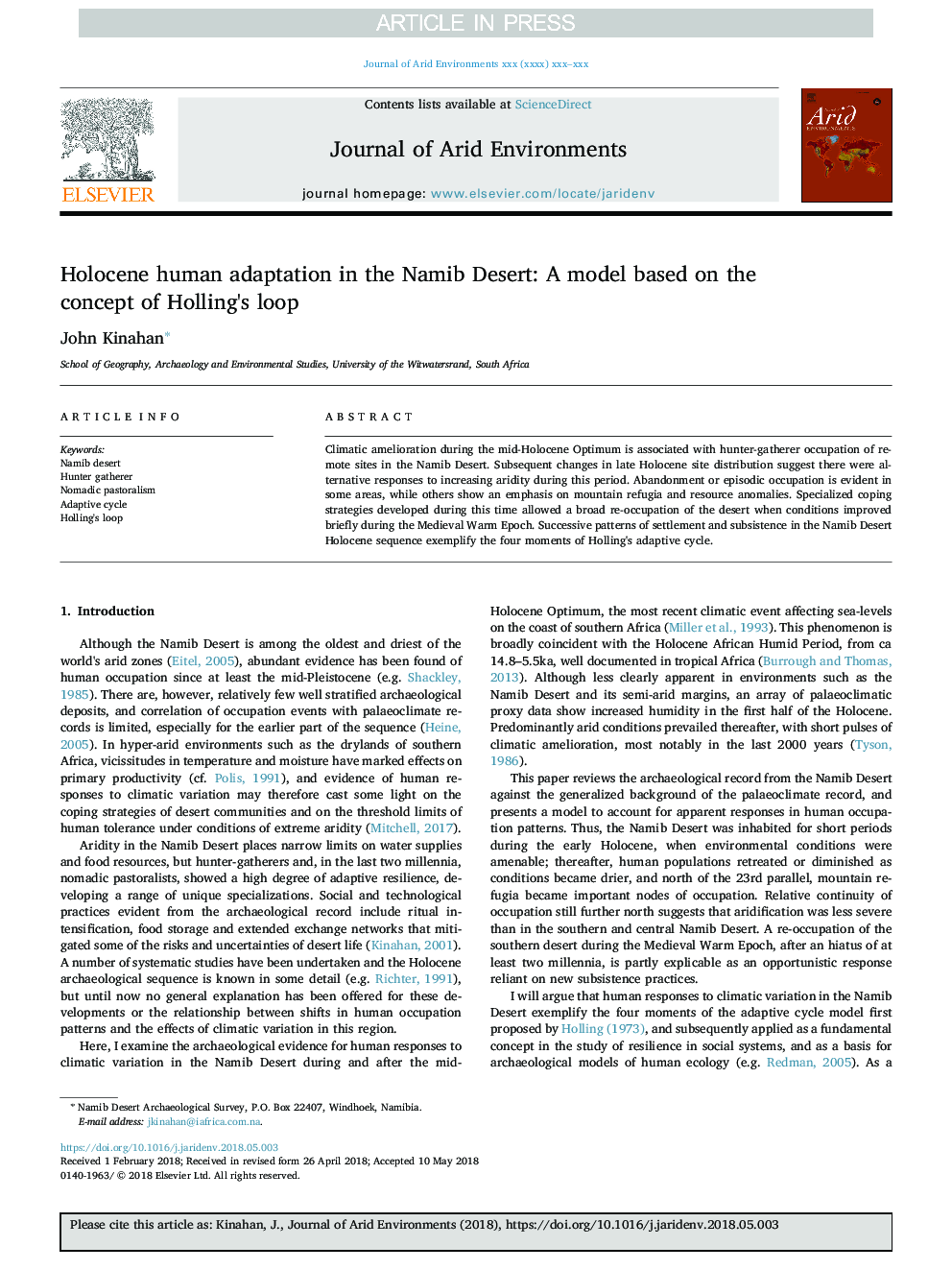| Article ID | Journal | Published Year | Pages | File Type |
|---|---|---|---|---|
| 8848446 | Journal of Arid Environments | 2018 | 13 Pages |
Abstract
Climatic amelioration during the mid-Holocene Optimum is associated with hunter-gatherer occupation of remote sites in the Namib Desert. Subsequent changes in late Holocene site distribution suggest there were alternative responses to increasing aridity during this period. Abandonment or episodic occupation is evident in some areas, while others show an emphasis on mountain refugia and resource anomalies. Specialized coping strategies developed during this time allowed a broad re-occupation of the desert when conditions improved briefly during the Medieval Warm Epoch. Successive patterns of settlement and subsistence in the Namib Desert Holocene sequence exemplify the four moments of Holling's adaptive cycle.
Related Topics
Physical Sciences and Engineering
Earth and Planetary Sciences
Earth-Surface Processes
Authors
John Kinahan,
